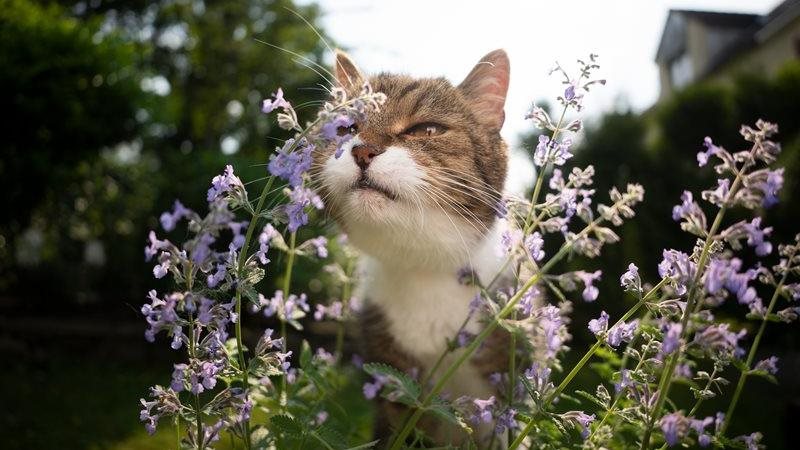
If you’ve ever watched your cat roll, pounce or zoom around after smelling catnip, you’ve probably wondered: why do cats love catnip so much? This fragrant herb can turn even the most laid-back cat into a playful ball of energy. So, what exactly is catnip, what does catnip do to a cat and how long does catnip last once it kicks in?
Let’s explore the science behind catnip for cats, why it affects them the way it does and how to use it safely!
What is catnip?
Catnip, also known as Nepeta cataria, is a member of the mint family. It contains a compound called nepetalactone, which is responsible for the euphoric reaction many cats experience. When cats sniff or chew catnip, nepetalactone binds to receptors in their nasal tissue and stimulates sensory neurons that affect their mood and behaviour.
Why do cats like catnip?
The short answer: it makes them feel good! Though, not all cats respond to catnip. Sensitivity is inherited, and about 30% of cats don’t react at all. For those that do, the effects can include:
-
Rolling or rubbing against the catnip
-
Zooming around the house
-
Playful or “hunting” behaviour
-
Shaking their heads
-
Purring, drooling or meowing
So, why do cats like catnip? It mimics feline pheromones and triggers a response similar to what they might feel during social or mating behaviour. It’s harmless, temporary and often hilarious to watch.
What does catnip do to a cat?
Catnip doesn’t cause hallucinations or harm! It just stimulates the brain in a way that makes cats feel excited or relaxed, depending on how they interact with it. Sniffing catnip usually leads to energetic behaviour, while eating it can have a calming effect.
If your cat seems extra hyper or mellow after exposure, it’s totally normal. Just make sure they’re in a safe space where they won’t hurt themselves during their zoomies.
How long does catnip last?
The effects of catnip typically last 5 to 15 minutes, depending on the cat and how they interact with it. After that, cats become temporarily immune to its effects for about 30 minutes to an hour. Once that wears off, they may respond again.
To keep things fresh, offer catnip in moderation. You can use dried catnip, sprays, toys or even grow your own plant. Just store it in an airtight container to preserve its potency.
Is catnip safe?
Yes! Catnip is safe for cats in small amounts. It’s non-addictive and doesn’t cause long-term effects. However, too much can lead to mild stomach upset, so it’s best to use it occasionally and monitor your cat’s reaction.
If your cat seems unusually withdrawn or overstimulated, it might not be the catnip. Behavioural changes can sometimes signal deeper issues. Learn more in our blog on depression in cats and dogs.
When to use catnip:
Catnip can be a great tool for:
-
Encouraging play and exercise
-
Reducing stress during travel or vet visits
-
Helping with training (e.g. getting your cat to use a scratching post)
Just remember that not all cats react, and some may prefer other forms of enrichment. If you’re looking for other safe ways to treat your cat, just be sure to avoid any harmful foods.
Health and catnip: what to watch for
While catnip is generally safe, it’s important to keep an eye on your cat’s overall health. Sudden changes in behaviour, appetite or energy levels may not be related to catnip at all. Learn more about common feline health issues in our recent blog.
Final thoughts on catnip
So, why do cats love catnip? It’s all thanks to a natural compound that triggers playful, happy behaviour in many felines. Whether your cat goes wild or stays chill, catnip for cats is a safe and fun way to enrich their environment. Just be sure to use it in moderation and keep an eye on their response. If your cat accidentally ingest anything harmful, call your vet immediately! Know that Petsecure can help with the cost of vet visits and more!
Learn what Petsecure covers and get your free quote today!
